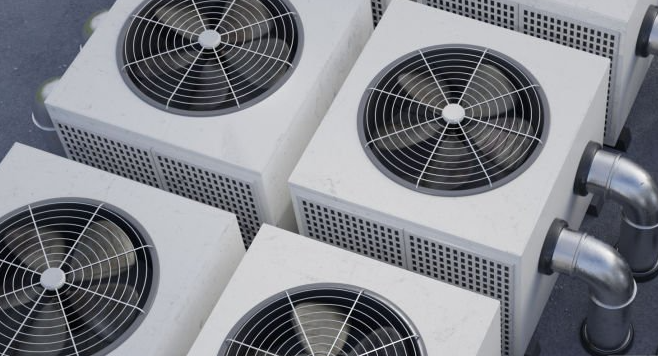Exploring Non-Surgical Orthopaedic Treatments in Singapore for Joint Pain

Your body has more than 200 joints, and all of them are susceptible to pain. This pain can range from a mild ache to a debilitating condition that significantly impacts your daily life. While joint pain can occur anywhere, it most commonly affects the back, knees, hips, shoulders, and hands. Fortunately, we have an array of non-surgical orthopaedic treatments in Singapore that can make a world of difference.
To help you navigate the world of orthopaedic treatments, let’s delve into the causes of joint pain and explore the non-surgical ways to take control of your pain and feel like yourself again.
Here’s your guide to treating orthopaedic issues without surgery.
Understanding Symptoms of Joint Problems
Joint pain is a common condition that can affect people of all ages. It might come on suddenly after an accident or gradually over time. It often appears as back pain, knee pain, hip pain, shoulder pain, and hand pain.
There are a wide variety of joint pain causes including injury, arthritis, and infection. The symptoms of joint problems that you experience will vary depending on the underlying cause, but here there are a few common experiences that we often see. Here are the common joint
- Pain: Joint pain works on a wide scale that can range from intense pain to mild annoyance. You might find that your joint pain is constant or it can come and go.
- Swelling: Swelling around your joint can be caused by inflammation or fluid buildup.
- Stiffness: The joint may feel stiff, especially in the morning or after periods of inactivity.
- Redness: The skin around your joint may be red and inflamed.
- Warmth: Your affected joint might feel warm to the touch.
- Decreased range of motion: You may have difficulty moving your joint through its full range of motion.
- Weakness: The muscles around the joint may feel weak.
Causes of Joint Pain
From injuries to chronic conditions, joint pain causes come from a diverse range of sources. While it’s crucial to talk to your doctor about your unique orthopaedic condition and treatment options, it can be helpful to inform yourself of some common culprits. Here are some reasons why you might be dealing with joint pain.
- Injuries: This is a frequent cause of joint pain. It can happen due to a sudden impact or overuse. Common injuries that cause joint pain include sprains, strains, and fractures.
- Arthritis: This is a general term for a group of conditions that cause inflammation and pain in joints. There are actually more than 100 different types of arthritis, but the two most common are osteoarthritis and rheumatoid arthritis. Osteoarthritis is caused by wear and tear on your joints over time, and it’s very common in older people. Meanwhile, rheumatoid arthritis is an autoimmune disease where the body’s immune system attacks the joints.
- Infections: An infection in a joint, called septic arthritis, can cause severe pain, swelling, redness, and warmth. Note: Having a joint infection is a serious condition that requires prompt medical attention.
- Other Causes: Other conditions can contribute to joint pain, including the following less common causes of joint pain:
- Bursitis: Inflammation of the fluid-filled sacs that cushion the joints.
- Tendonitis: Inflammation of the tendons that connect muscles to bones.
- Lupus: An autoimmune disease that can affect various parts of the body, including joints.
- Fibromyalgia: A chronic condition that causes widespread pain and tenderness, including in joints.
- Gout: A sudden and severe attack of pain, swelling, redness, and tenderness in a joint, often the big toe.
Learn how to manage your musculoskeletal health as you age in this article.
Importance of Early Diagnosis and Treatment
When you have joint pain, it is essential to talk to an orthopaedics specialist. Early diagnosis in orthopaedics allows for easier and more effective treatment options while preventing further damage. Managing orthopaedic issues is also key to preserving joint function.
By managing joint pain, you can avoid complications and save on orthopaedic treatment. Like fixing a small crack in your home’s foundation, you can save a lot of time, money, and stress by tackling it as early as possible.
Overview of Non-Surgical Orthopaedic Treatments
Surgery isn’t always the answer for orthopaedic issues. There are a variety of common and effective non-surgical orthopaedic treatments that can help manage pain, improve mobility, and promote healing. Let’s explore the treatment most frequently recommended by orthopaedic experts.
Physical Therapy for Joint Pain
Orthopaedic physical therapy is a specialised branch of physical therapy focused on conditions of the musculoskeletal system. This type of physical therapist works with your bones, muscles, joints, and connective tissues.
Physical therapy for joint pain is an effective approach to managing discomfort and improving your overall well-being. An orthopaedic physical therapist can assess your pain level, range of motion, and muscle strength. Based on this evaluation, they will design a customised treatment plan with techniques specifically tailored to your needs.
By building stronger muscles with physical therapy, you can better support your joints to reduce stress and pain. Physical therapy exercises target specific muscles to ease the burden on your joints.
In some cases, limited flexibility can also be a culprit behind joint pain. If this is true in your case, your orthopaedic specialist will design exercises to improve your range of motion to help you move easier.
Unlike other types of pain management, physical therapy requires a collaborative approach. Your active participation in the exercises and commitment to the treatment plan are crucial aspects of both physical therapy and orthopaedic physical therapy for joint pain. This cooperative effort plays a key role in achieving optimal results and effectively getting rid of joint pain.
Your joint pain specialist will also educate you on proper posture, body mechanics, and exercises you can perform at home to maintain the progress made during therapy sessions.
Medication for Joint Pain
Medication can be a valuable tool for managing joint pain, but it works best when combined with other approaches for optimal results. Orthopaedic doctors typically prescribe medication based on the underlying cause and severity of your joint pain.
Pain relievers like acetaminophen and nonsteroidal anti-inflammatory drugs (NSAIDs) such as ibuprofen or naproxen are often the first line of treatment. These medications work by reducing pain signals and inflammation in the body to offer temporary relief.
In some cases, stronger anti-inflammatory medication might be injected directly into the affected joint through a procedure called a corticosteroid injection. While these injections can provide targeted relief for pain and inflammation, their use is typically limited due to potential side effects.
For chronic inflammatory conditions like rheumatoid arthritis, doctors may prescribe disease-modifying antirheumatic drugs (DMARDs). These medications don’t directly target pain but instead work to slow disease progression and minimise joint damage, leading to improved function and potentially less pain in the long run.
The specific cause of your joint pain might necessitate other medications as well. For example, some medications can help manage gout flares, while others might be prescribed to address nerve pain associated with certain conditions.
Braces and Orthotics for Joint Pain
Bracing and orthotics can be valuable tools for managing joint pain, but their effectiveness depends on the underlying cause and severity of your pain. These supports work in a few different ways to provide stability, improve joint alignment, and reduce stress on your painful joints.
For example, knee braces can offer compression and support for ligament instability or injuries. They can also help offload pressure in cases of osteoarthritis by shifting some of the weight distribution away from the damaged joint compartment. Similarly, ankle braces can enhance stability and prevent sprains, while wrist braces may be helpful for carpal tunnel syndrome or repetitive strain injuries.
Orthotics, on the other hand, are custom-made shoe inserts designed to address specific foot problems and their impact on joint pain elsewhere in the body. They can improve your arch shape and biomechanics, promoting better alignment and reducing stress on your ankles, knees, and hips. Orthotics are particularly beneficial for conditions like plantar fasciitis, flat feet, and certain gait abnormalities.
It’s important to note that bracing and orthotics are not one-size-fits-all solutions. It is important to talk to an orthopaedic specialist to decide on the most appropriate type of support for your specific needs. A healthcare professional is able to assess your condition, recommend the right brace or orthotic design, and ensure proper fit and usage for optimal results.
The Role of Lifestyle Modifications
Many people find relief from joint pain by incorporating a holistic approach that goes beyond medication and supportive devices. This approach focuses on empowering your body’s natural healing mechanisms and promoting long-term joint health. We’ll delve into these strategies, exploring techniques that range from activity modification and pain management to weight management and alternative therapies.
● Rest and Modification: Reducing activity that aggravates the condition allows the body to focus on healing. Modifications can involve using assistive devices like canes or braces to support joints during activities.
● Ice and Heat Therapy: Applying ice packs can reduce inflammation and pain, while heat therapy can improve blood flow and promote healing in some cases.
● Weight Management: Maintaining a healthy weight reduces stress on weight-bearing joints like knees and hips, easing pain and improving mobility.
● Lifestyle Changes: Modifying activities, maintaining good posture, and incorporating stretching into your routine can all contribute to better joint health and pain management.
● Alternative Therapies: Techniques like acupuncture, massage therapy, and yoga can offer pain relief and promote relaxation, potentially improving overall well-being.
Benefits of Non-Surgical Treatments
Non-surgical treatments for joint pain offer a compelling alternative to medication and surgery. Compared to surgery, they carry a lower risk of complications and boast shorter recovery times, allowing you to return to your daily activities much quicker. Many non-surgical approaches, like physical therapy and exercise, promote the body’s natural healing mechanisms by strengthening muscles, improving joint flexibility, and encouraging tissue repair. This translates to long-term pain relief and improved joint function by addressing the underlying cause of the pain, not just the symptoms.
The beauty of non-surgical treatments lies in their ability to be personalised. Therapists can design a treatment plan specific to your needs and fitness level, while alternative therapies like yoga or massage offer a variety of options to find what works best for you. Moreover, the benefits extend beyond joint pain relief. Exercise and weight management, for instance, can improve cardiovascular health, mood, and sleep quality, leading to a more holistic sense of well-being. Finally, non-surgical treatments play a vital role in preventing future joint problems. Techniques like maintaining good posture, incorporating stretching routines, and making lifestyle modifications can empower you to take a proactive approach to managing joint pain and keep your joints healthy and strong for years to come.
Who is a Candidate for Non-Surgical Treatments?
Non-surgical treatments for joint pain can be a good option for a wide range of people. Here’s a look at ideal candidates:
● People with mild to moderate joint pain: If you’re experiencing discomfort but it’s not debilitating, non-surgical treatments can provide effective pain relief and improve your joint function.
● People with certain medical conditions: Non-surgical treatments might be a better option for people with underlying health conditions that make surgery risky.
● Active individuals: If you want to maintain an active lifestyle, non-surgical treatments like physical therapy and exercise can help you stay mobile and manage pain effectively.
● Anyone looking to prevent future problems: Even if you’re not currently experiencing joint pain, incorporating non-surgical strategies like weight management and stretching can help keep your joints healthy and prevent future issues.
It’s important to consult a doctor to determine the best course of treatment for your specific situation. They can assess the severity of your pain, the underlying cause, and your overall health to determine if non-surgical treatments are right for you.
Cost of Orthopaedic Treatment in Singapore
In Singapore, orthopaedic treatment costs vary depending on several factors. These include the specific treatment needed, the clinic or hospital you choose, and whether you use public or private healthcare. To give you a general idea of what to expect, here are the common costs:
| Service | Public Sector | Private Sector |
| Consultation (Initial) | S$30-$50 | S$150-$350 |
| Consultation (Subsequent) | Lower than initial | Varies by clinic |
| Knee Replacement (after subsidies) | S$5,000-$8,000 | S$15,000-$30,000 |
| Hip Replacement (after subsidies) | S$5,000-$8,000 | $15,000-$30,000 |
| Arthroscopic Surgery | S$2,000-$8,000 | $5,000-$10,000 |
| Imaging & Tests | S$200-$1,000 | S$200-$1,000 |
| Physiotherapy (per session) | S$80-$150 | S$100-$200 |
Non-Surgical Orthopaedic Treatments in Singapore – Editor’s Choice
Looking to explore non-surgical orthopaedic treatments in Singapore? When it comes to specialist treatment, it is crucial to work with the very best. Dr James Tan Chung Hui is one of the premium orthopaedic surgeons and sports medicine specialists who offers specialist orthopaedic treatment in Singapore.










